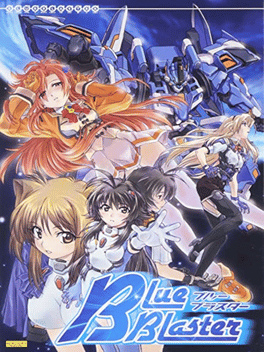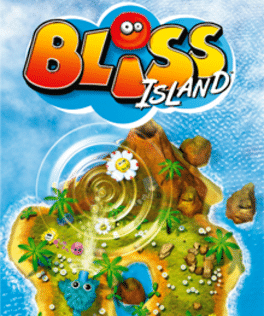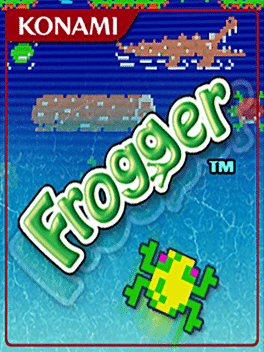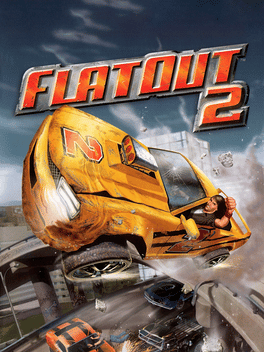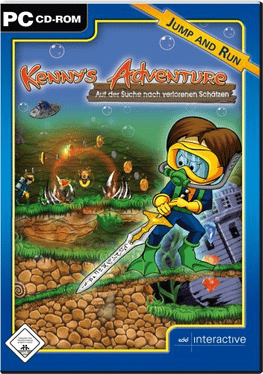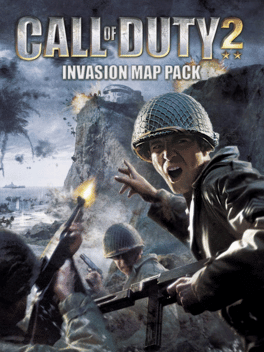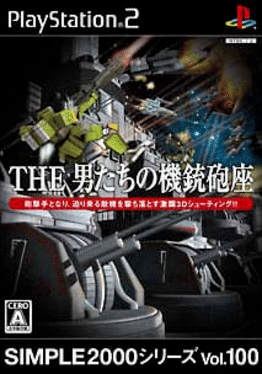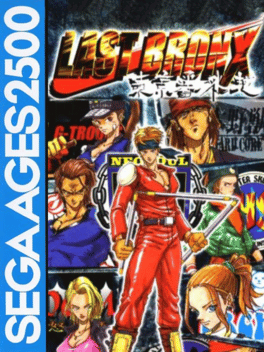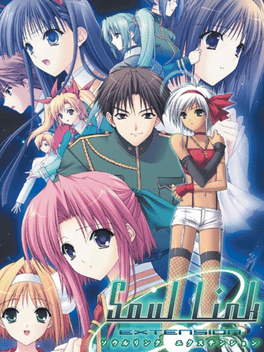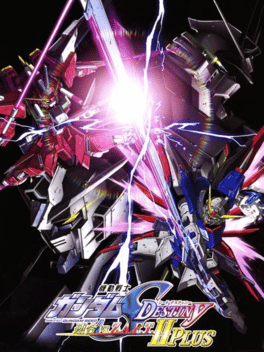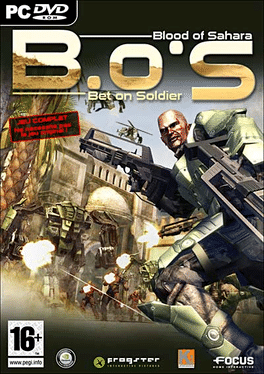New Games - Page 10258
-
Blue Blaster
2006
Blue Blaster
2006
Blue Blaster is a 2006 mecha real-time strategy game developed by Kogado Studio's Iruka team. Released for Windows PCs. It is the sequel to the 2005 title Blue Flow, by the same developers. The story is told through events during the combat sections and visual novel portions outside of combat. -
Infinite Monkeys
2006
Infinite Monkeys
2006
This game was made for the fifth anniversary of the monthly game design contest of AGS (Adventure Game Studio). As such, the game contains elements from every earlier contest over those five years. The title is based on the saying that if you take an infinite amount of monkeys and have them work on an infinite amount of typewriters, you'll end up with every story ever known to man. The result is an experimental adventure game containing zombies, angels, a chessboard, a moonbase, time travel and more. -
Puzzle Challenge: Crosswords & More!
2006
Puzzle Challenge: Crosswords & More! offers more than 200 hours of gameplay, ranging from easy to difficult standard crosswords, codebreakers that require the player to determine number matches assigned to each letter of the alphabet, puzzles with cryptic clues, diamond shaped puzzles and backwards puzzles where the player fills in their own black squares. Word searches come in standard or themed versions. Profiles can be set for multiple players so that the entire household can use the software. Exclusive to the PSP system version is a two-player game sharing mode that enables two people on separate handheld consoles to play the game via wireless connection using one disc. -
Bliss Island
2006
Bliss Island
2006
star 4In the game, players take on the role of Hoshi the Zwooph, a small blue fluffy creature with a long trunk, as he competes in loads of mini games that revolve around his unique ability to expel precision puffs of air at high velocity from his trunk - the game's signature and unique gameplay mechanic. Hoshi's great puffs can be used to bounce or control objects in the game world to complete -
Frogger
2006
Frogger
2006
star 7Frogger is the Xbox Live Arcade version of the popular arcade game of the same name by game developer Digital Eclipse, published by Konami. Full game includes the new Versus Speed, Co-Op, and Versus Head-to-Head multiplayer modes! Earn achievements and post your high scores against other players on Xbox Live! -
Super Monkey Ball Adventure
2006
star 5Our four heroes from Super Monkey Ball - Aiai, Meemee, Baby and Gongon - were enjoying a typical day, when they saw a flying machine crash down on a nearby island. Soon, they discovered that the mysterious Naysayers have appeared, spreading discord and unhappiness all over the island. And to top it all off, the prince and princess of the neighboring islands have gone missing on Jungle Island - if they aren't found and returned, there's sure to be trouble! Can our heroes restore order to Monearth? Super Monkey Ball Adventure takes the monkey rolling madness of the previous games and puts a story-based spin on it. Choosing from one of the four monkeys, Players roll their way around the various islands of Monearth, talking to citizens and performing the tasks they request (such as delivering sandwiches, finding a missing baby, rescuing rare flowers, and more) to cheer them up. -
FlatOut 2
2006
FlatOut 2
2006
star 8.1Experience the drive of your life as you throw yourself around on and off the track causing fences to shatter, tyre walls explode, water tanks and barrels fly across the track into other cars. And if anyone, including you, gets caught up in a big smash sit back and watch as the driver gets catapulted through the windscreen in spectacular effect. With over 5000 destructible objects on each track and 40 deformable pieces on every car sparks are guaranteed to fly increasing the mayhem with every lap! Featuring an enhanced version of the original's lauded physics engine and even faster driving track designs, FlatOut 2 also boasts a plethora of improvements, enhancements and additions to make this the definitive FlatOut experience. Twice as many vehicles, a more sophisticated career mode, additional race environments, double the number of tracks; twice as many mini-games along with many multiplayer modes (via LAN only) are just some of the exhaustive features that are included in FlatOut 2. - 34 vehicles to wre -
Boku no Natsuyasumi Portable: Mushimushi Hakase to Teppenyama no Himitsu!!
2006
An enhanced Playstation Portable port of the original Boku no Natsuyasumi. Essentially a "creator's cut" of the original, doubling the amount of insects able to be caught as well as adding three new characters to the story. -
Scuba in Aruba
2006
Scuba in Aruba
2006
"Scuba in Aruba" is an action arcade game where players guide a young scuba diver named Kenny on a quest to recover a stolen family relic. The relic was taken by pirates, broken into pieces, and scattered across various underwater locations. Players navigate through deep waters, encountering dangerous sea creatures and collecting treasures along the way. -
Call of Duty 2 - Invasion Map Pack
2006
Invasion Map Pack is a downloadable map pack for Call of Duty 2 featuring five new maps: Crossroads, Newvillers, Normandy, Decoytown, and Rostov. Like all the DLC released for Call of Duty 2 it was only available on Xbox 360. -
Simple 2000 Series Vol. 100: The Otoko Tachi no Kijuu Houza
2006
The Otoko Tachi no Kijuu Houza is an Action game, developed by Opus and published by D3Publisher, which was released in Japan in 2006. -
Sega Ages 2500 Vol. 24: Last Bronx - Tokyo Bangaichi
2006
This game is a port of Last Bronx. It is very similar to the arcade version, but features extra options. These options differ from the extras seen in the Sega Saturn version though. -
Soul Link Extension
2006
Soul Link Extension
2006
An all-ages release of the original game with the adult elements removed but with additional material. -
Mobile Suit Gundam SEED Destiny: Rengou vs. Z.A.F.T. II
2006
It is the sequel to Gundam Seed: Rengou vs. Z.A.F.T. with a slightly revised fighting system, new units and characters, and updates to old characters. Playable characters and units are taken from Gundam SEED as well its sequel Gundam SEED Destiny. Whereas the console version of its prequel had only a few units and playable characters from the beginning of Gundam SEED Destiny such as the Impulse Gundam, RvZ2 includes characters and units from the entire series, such as the Strike Freedom Gundam and Infinite Justice Gundam. -
Bet on Soldier: Blood of Sahara
2006
Bet on Soldier: Blood of Sahara is an stand-alone expansion pack for the original Bet on Soldier.

